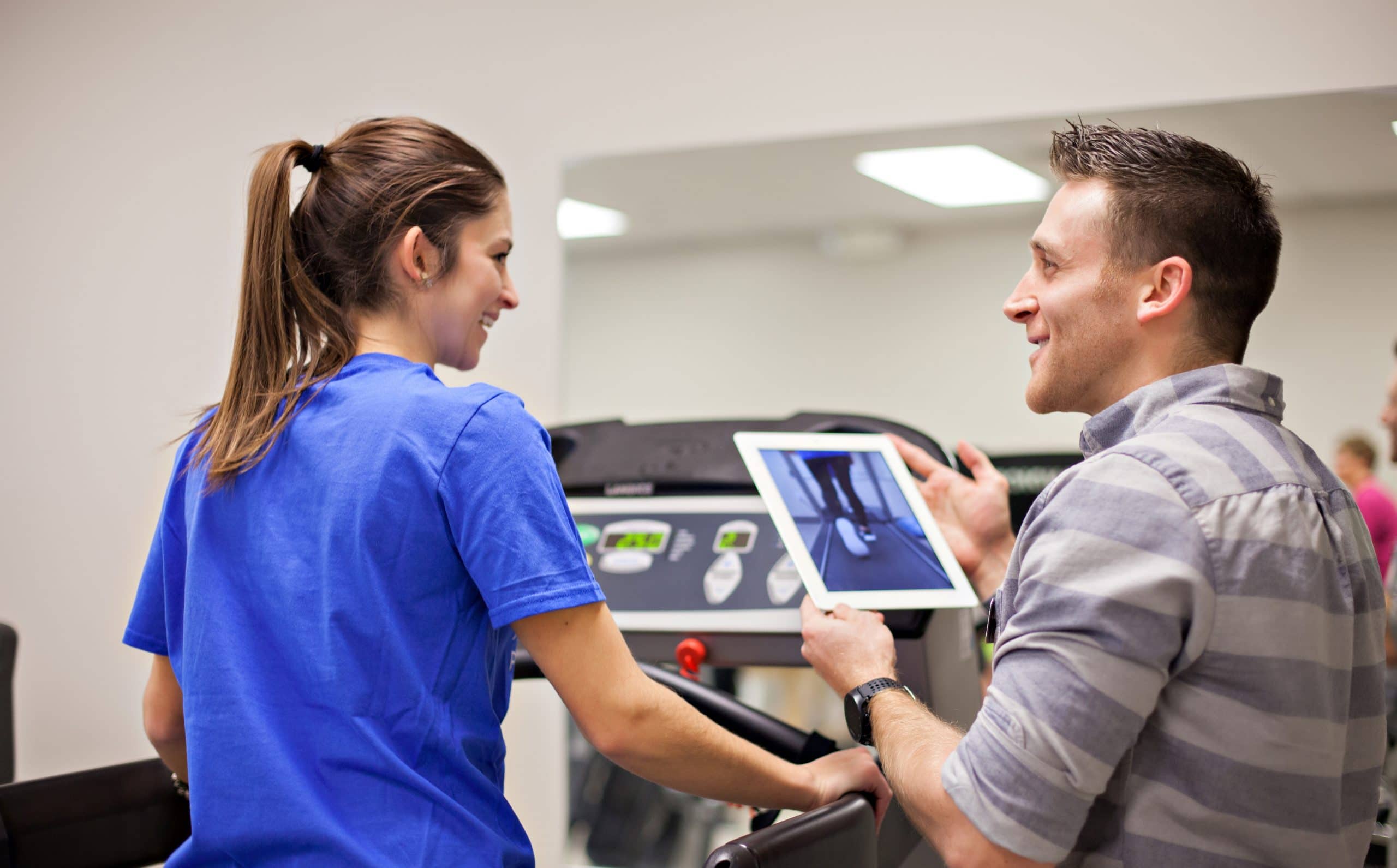Running Form... Does It Really Make a Difference?
Why does my knee hurt at mile 2 every time I go out to run? All the sudden my feet start hurting when I run. What should I do? As the weather turns warmer and we see signs of spring many people find themselves hitting the pavement again after taking the Michigan winter off. As many as 65% of runners experience an annual injury. Whether you are a first time runner, casual runner or have run fifty 25K’s, your running form can make a big difference in staying injury free.
The best thing to do if you are having pain while you are running is to have one of our physical therapists analyze your gait using Video Gait Analysis or VGA. They can break down your gait from heel strike to mid stance to push off to determine where you may have things to work on. But there are also a few things you can do on your own to keep you running and training for that race.

The five most common running injuries include patellofemoral pain (pain at the front of the knee), iliotibial band friction syndrome (pain along the outside of the knee), plantar fasciitis (pain in the arch/foot), tibial stress fracture and knee meniscal or cartilage injuries. The most common reasons cited for these injuries include excessive and repetitive impacts or too much energy for the body to safely absorb and excessive or prolonged pronation (which is falling in of the foot).
So what can you do to help reduce your risk for injury?
• Shoe wear is an important factor in preventing these injuries. Wearing the proper shoe for your foot and running style as well as replacing your shoes every 500 miles can play a big part in keeping your pain at bay.
• Keep your hips and core strong. Many injuries at the feet and knees can be due to weakness at the hip causing an inability of the body to absorb the impact caused by running.
• Keep your stride length shorter. The farther the foot hits the ground in front of the body the more braking impulse the body has to overcome to maintain your speed.
• Try not to land too much on your heel. This goes along with keeping your stride length shorter. If you stretch your stride you will land on your heel and more forces will have to be absorbed through your leg. Same can be said for too much toe landing.
• Try increasing your cadence. It has been said that 180 steps per minute is an ideal race pace. Now not everyone is to run at this fast of a pace. But increasing your cadence even 5 steps per minute can help naturally improve your running form to help reduce injury. To find your steps per minute you can count every step for 15 seconds and then times it by 4. There are even songs you can download with certain beats per minute to help keep you at your target speed.
• Increase your mileage only 10% per week. This has been found to be a safe and reasonable amount for the body to tolerate.
• Stay relaxed up top. From your shoulders to your hands, staying relaxed will allow improved blood flow and for more efficient running.

These are just a few tips to improve your running form. There are other factors that can contribute to injury and can best be analyzed by a professional or physical therapist. Many of our 14 locations have someone that could help keep you pain free and out on that pavement training for your next race! Learn more about our Video Gait Analysis specialists here or call any of our 14 locations to learn how our physical therapists can help you.
